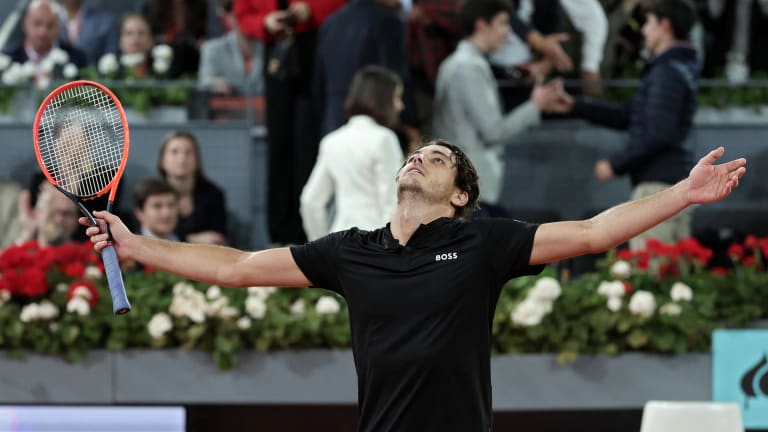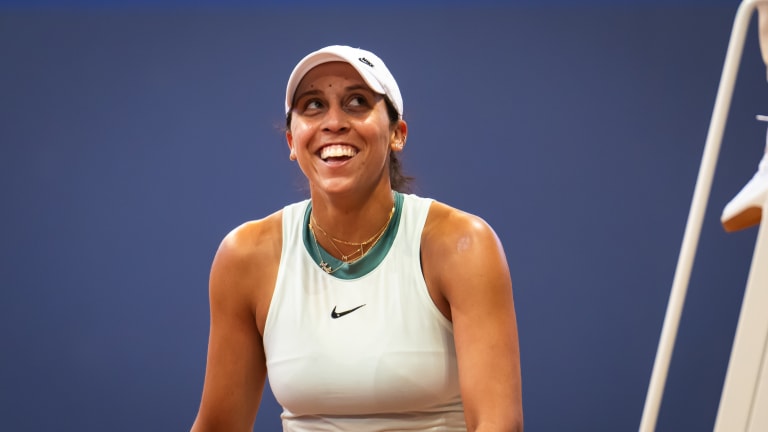Madrid, Spain
Taylor Fritz, Madison Keys learn to love Madrid's fast clay by sticking to their strengths
By May 02, 2024Madrid, Spain
Andrey Rublev overcomes fever and praises doctors after winning Madrid Open for the first time
By May 06, 2024Madrid, Spain
Andrey Rublev is the 'most proud' he's ever been after defying adversity in Madrid victory
By May 05, 2024Madrid, Spain
Andrey Rublev rallies, then outlasts, Felix Auger-Aliassime to win Madrid title
By May 05, 2024Madrid, Spain
Big finals don’t get much tighter, or better, than Iga Swiatek and Aryna Sabalenka's melee in Madrid
By May 05, 2024Madrid, Spain
Preview: Andrey Rublev, Felix Auger-Aliassime seeking a turnaround in Madrid final
By May 04, 2024Madrid, Spain
Iga Swiatek saves three match points to beat Aryna Sabalenka in Madrid Open final
By May 04, 2024Madrid, Spain
Iga Swiatek topples Aryna Sabalenka in heavyweight title clash for first Madrid Open crown
By May 04, 2024Madrid, Spain
Preview: Iga Swiatek, Aryna Sabalenka run it back with another all-Top 2 Madrid final
By May 03, 2024Madrid, Spain
Andrey Rublev beats Taylor Fritz to reach Madrid Open final against Felix Auger-Aliassime as Jiri Lehecka joins injured list
By May 03, 2024Madrid, Spain
Taylor Fritz, Madison Keys learn to love Madrid's fast clay by sticking to their strengths
Said Keys about her change in fortune, “Finally really just honestly saying, ‘F-it, I’m just going go out and do my best.’”
Published May 02, 2024
Advertising

Fritz reached the Munich final prior to stringing together four more wins in Madrid.
© AFP or licensors
Advertising

Keys is through to her first WTA 1000 semifinal since 2022 Cincinnati.
© 2024 Robert Prange